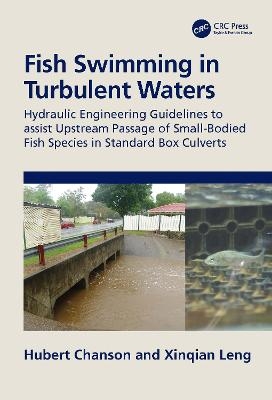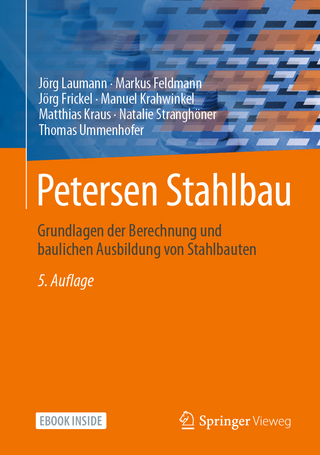
Fish Swimming in Turbulent Waters
CRC Press (Verlag)
978-0-367-54606-9 (ISBN)
Low-level river crossings, including culverts, are important for delivering a range of valuable socioeconomic services, including transportation and hydrological control. These structures are also known to have negative impacts on freshwater river system morphology and ecology, including the blockage of upstream fish passage, particularly small-body-mass fish species. Given the enormous environmental problems created by road crossings, new hydraulic engineering guidelines are proposed for fish-friendly multi-cell box culvert designs.
The focus of these guidelines is on smooth box culverts without appurtenance, with a novel approach based upon three basic concepts: (I) the culvert design is optimized for fish passage for small to medium water discharges, and for flood capacity for larger discharges, (II) low-velocity zones are provided along the wetted perimeter in the culvert barrel, and quantified in terms of a fraction of the wetted flow area where the local longitudinal velocity is less than a characteristic fish speed linked to swimming performances of targeted fish species, and (III) the culvert barrel is smooth, without any other form of boundary treatment and appurtenance.
The present monograph develops a number of practical considerations, in particular relevant to box culvert operations for less-than-design discharges. It is argued that upstream fish passage capabilities would imply a revised approach to maintenance, in part linked to the targeted fish species.
This reference work is authored for civil and environmental engineers, as well as biology and ecology scientists interested in culvert design. While the book is aimed to professionals, the material is also lectured in postgraduate courses and in professional short courses.
Hubert Chanson is Professor of Civil Engineering at the University of Queensland, where he has been since 1990, having previously enjoyed an industrial career for six years. His main field of expertise is environmental fluid mechanics and hydraulic engineering, both in terms of theoretical fundamentals, physical and numerical modelling. He leads a group of 5-10 researchers, largely targeting flows around hydraulic structures, two-phase (gas-liquid and solid-liquid) free-surface flows, turbulence in steady and unsteady open channel flows, using computation, lab-scale experiments, field work and analysis. He has published over 1,100 peer reviewed publications including more than 20 books. He serves on the editorial boards of International Journal of Multiphase Flow, Flow Measurement and Instrumentation and Environmental Fluid Mechanics, the latter of which he is currently a senior Editor. http://www.uq.edu.au/~e2hchans Dr Xinqian (Sophia) Leng is a postdoctoral research fellow at the University of Queensland. Her research interests include experimental investigations of unsteady rapidly-varied open channel flows, computational fluid dynamics (CFD) modelling of bores and hydraulic structures, and field investigations of tidal bores. She authored 45 peer-reviewed papers, including 20 international scientific journal articles. Dr Leng is the recipient of the 2018 Baker Medal, Institution of Civil Engineers, UK for the paper in the journal Engineering and Computational Mechanics, Proceedings of the Institution of Civil Engineers, UK. She was awarded a 2019-2021 Idex international research fellowship from the University of Bordeaux (France). Xinqian is actively involved in international collaborations with overseas research institutions such as the University of Bordeaux and Zhejiang Institution of Hydraulics and Estuary (China), as well as inter-disciplinary cooperation with industrial partners e.g. the New South Wales Department of Primary Industries Fisheries (Australia) and Queensland Department of Transport and Main Roads (Australia).
Foreword (by Emeritus Professor Colin J. Apelt); 1. Introduction; 2. Hydraulic engineering design of standard box culverts - Current practice; 3. Fish passage in standard box culverts; 4. Hydraulic engineering design for upstream fish passage in standard box culverts - General concepts and design guidelines; 5. Design application; 6. Discussion and practical considerations; 7. Conclusion; Appendix A - Glossary of technical terms; Appendix B - Hydraulic calculations of natural flood plain and less-than-design flow in a box culvert; Appendix C - On physical modelling of fish passage in standard box culverts; Appendix D - Computational Fluid Dynamics (CFD) Modelling of fish friendly standard box culvert barrel; Appendix E - On alternatives to improve upstream passage of small-body-mass fish, including retrofitting; Appendix F - Digital appendix: video movies of culvert operation and small-bodied fish swimming in box culvert channels.
| Erscheinungsdatum | 23.11.2021 |
|---|---|
| Zusatzinfo | 16 Tables, black and white; 106 Illustrations, color; 24 Illustrations, black and white |
| Verlagsort | London |
| Sprache | englisch |
| Maße | 174 x 246 mm |
| Gewicht | 371 g |
| Themenwelt | Technik ► Bauwesen |
| ISBN-10 | 0-367-54606-X / 036754606X |
| ISBN-13 | 978-0-367-54606-9 / 9780367546069 |
| Zustand | Neuware |
| Haben Sie eine Frage zum Produkt? |
aus dem Bereich


